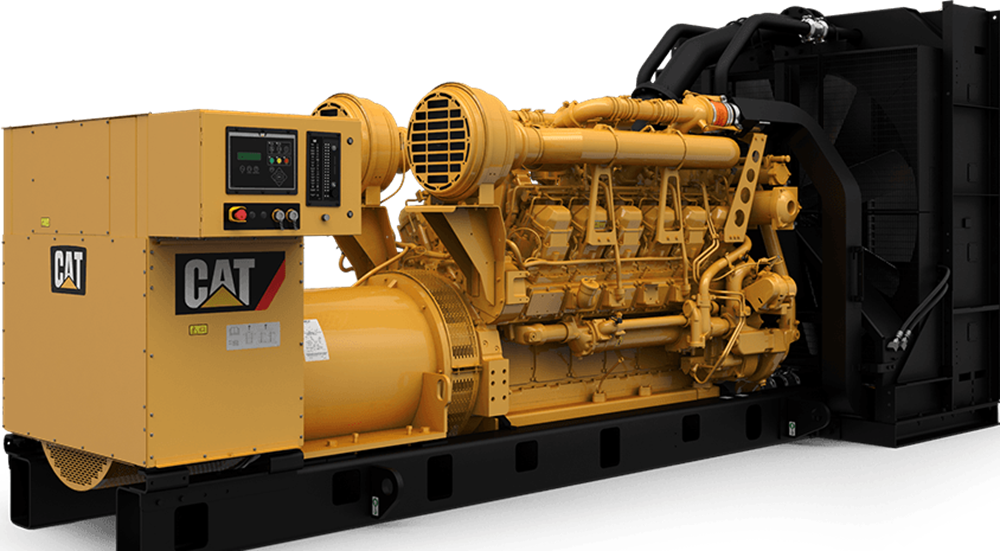
A Guide to Ensuring You Have the Right Size Generator for your Business
Category: Equipment and Solutions
You understand that your company needs a reliable backup and primary power source to protect your assets and maximize productivity, but do you know how to pick the right size unit to support your needs? Having an understanding of industrial and commercial generator sizing is critical for helping you select the most efficient options and avoiding the consequences of having a system that lets you down when you need it the most.
Installing the right size power source guarantees dependable performance with minimal maintenance requirements. It also reduces the risk of system failures, property damage, and employee safety concerns.
Whether you work in retail, manufacturing, commercial or industrial, many factors go into identifying your generator size choices. While in some cases it will be necessary to consult with a trained power system professional or certified electrician to be sure what size generator will meet your needs, the following tips and resources provide insight into the key steps involved in the process to help get you started.
Assess Your Power Requirements
Generators come in a wide range of sizes and configurations based on your unique requirements and a variety of other deciding factors. A crucial step in knowing what size generator you need for your business is determining how and where the equipment is going to be used and the amount of power and wattage required to support all your applications. Whether you need a solution for maintaining productivity at an industrial plant in case of a blackout or portable gen set for industrial tools and remote operations, make a list of everything the generator will need to power at any given time.
Calculating your total KVA and KW power requirements will narrow down generator size choices into a specific capacity range. When generator sizing for certain commercial and retail application, a square foot measurement system is often used to factor the power requirements using the following equations:
- Retail: kW = 50 kW + 10 watts/sq. ft.
- Commercial: kW = 30 kW + 5 watts/sq. ft.
Define Your Site Conditions
Now that you have a handle on the range of powering ratings and load capacity for your operation, it’s time to consider site conditions and generator options. Ask yourself:
- What will I use the generator set for?
- Am I looking for a portable or stationary solution?
- Does my facility have a limited amount of space or environmental concerns?
- Do my power requirements call for a single-phase or three-phase unit?
Knowing the generator set duty, fuel type, electrical system connection and supply rating are necessary to determine the most efficient model. Additional options to consider include ambient and altitude measures, the capacity for potential expansion, emissions and voltage regulations.
Choose Between Standby, Primary and Emergency Power Options
When deciding what type of generator you need for your commercial property, you have to consider how you will be using it. If you plan to use the generator to help offset some utility costs during peak usage hours, you might want to consider a primary generator set.
If you only need a generator during power outages, you’ll want to consider either standby or emergency power. Having a standby generator is an advantage if you have vital equipment that must be able to function even when grid access is not available.
Depending on your work, however, you may not need to run every single thing in your building during an outage. In this scenario, an emergency power supply generator will be most useful. These generators only power a limited number of resources, typically those considered of high importance.
Placing Your Generator
You can install commercial generators either indoors or outdoors. To decide where to locate the generator, you should consider factors such as the unit’s size, noise generation, and access and airflow requirements. Large generators require more fuel as well. Depending on how much power you need, an outdoor generator might be your best option to preserve valuable floor space in your facility.
Consult with a professional to help you determine the size and location of your new generator.
Utilize Available Resources
While it’s possible to size a generator for your business on your own, it becomes increasingly complex as your power requirements become more significant. Thankfully, there are many viable ways to get the information and support needed to make accurate assessments.
Among the most useful online tools for simple sizing generator sets is the Cat® Electric Power SpecSizer. All you need to do is register for a Caterpillar CWS ID to access this web application designed to help identify generator size choices and view product availability. This generator sizing guide from Caterpillar works well as a first step to finding the right unit for your business.
Contact NMC Cat for Commercial Generator Sizing Today
If you’re in the process of sizing commercial or industrial generators for your business, the experts at NMC Cat can help. Our power system team is here to assess your needs and find the best solutions within our extensive inventory. After installation, our team at NMC Cat can provide numerous services to ensure your generator’s safety and efficiency. We can rebuild components, clean the fuel system, complete load bank testing and perform other repairs. We even offer customized painting for your generator.
Contact us for more details and to speak with a live representative about your projects today.
